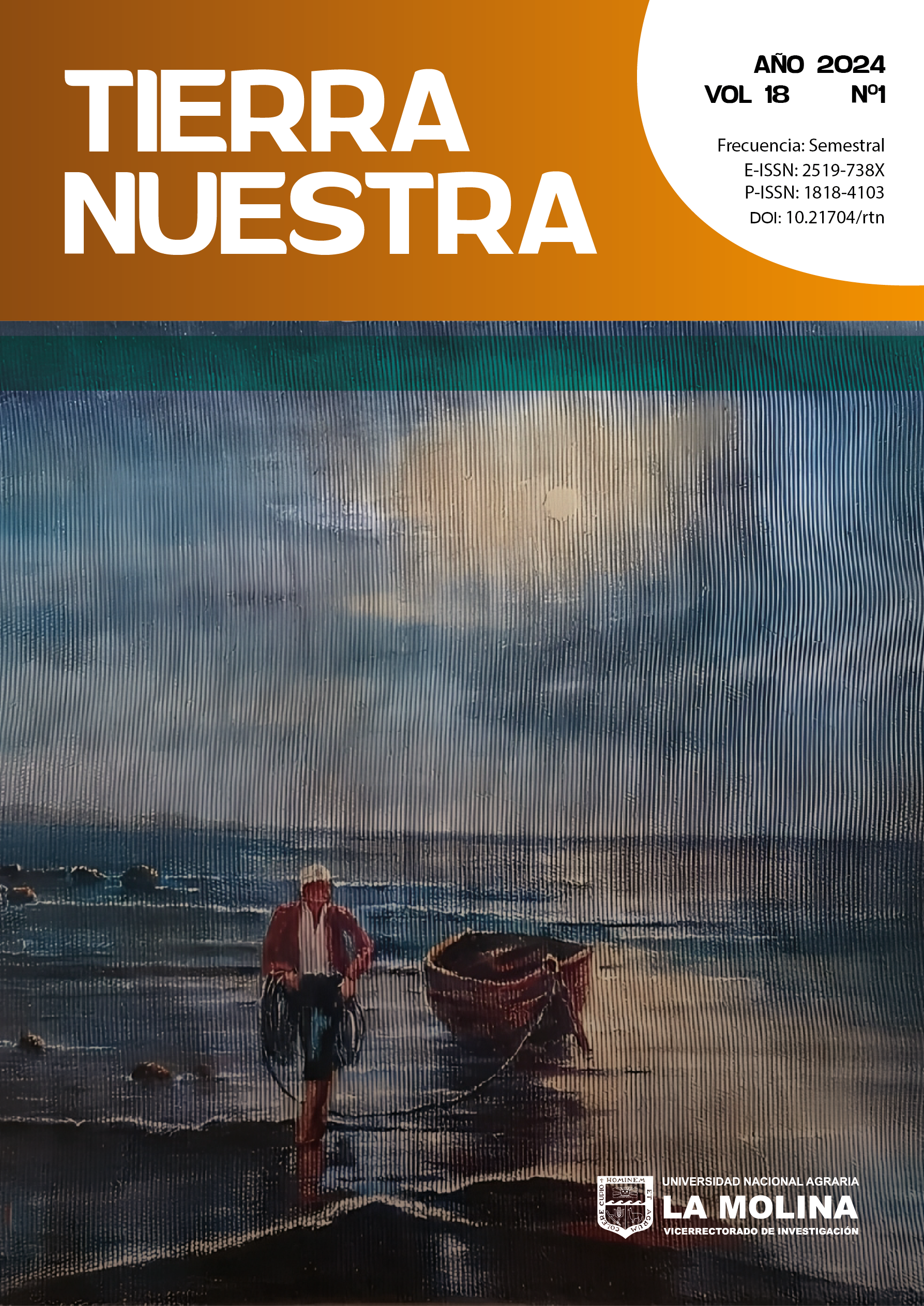The clickbait titles in social networks from speech act theory
DOI:
https://doi.org/10.21704/rtn.v18i1.1867Keywords:
Fake news, pragmatics, corpus analysis, illocutionary force, social networksAbstract
The article analyzed the originality of the titles in clickbait videos that appear unexpectedly on the pages of the main virtualized social networks of Instagram, Facebook, YouTube, etc. The purpose of the study was to analyze clickbait headlines as directive illocutionary acts on clickbait video material that appeared on virtualized social networks. The research methodology was qualitative, discourse analysis, which aimed to identify the meanings of the clickbait headlines as significant elements of the media text, and communicative-pragmatic analysis, which consists of determining the illocutionary force of the directives. The results show that the communicative success of clickbait headlines depends on the recipient’s level of knowledge of the information, which correlates with the perceiver’s degree of curiosity. Research in the media space shows that the recipient avoids excessive cognitive effort so they seek to evade clickbait headlines. The study concluded by stating that clickbait headlines allow them to be classified as a directive illocutionary act, since they deliberately obscure the nominative function itself and advance the advertising function to particularly influence the behavior of the recipient of the information.
Downloads
References
Aladro, E. (2017). El lenguaje digital, una gramática generativa. CIC. Cuadernos de Información y Comunicación, 22, 79-94. https://doi.org/10.5209/CIYC.55968
Austin J. (1962). How to do things with words. Oxford at the Clarendon Press.
Bach, K. (2006). Speech acts and pragmatics. The Blackwell guide to the philosophy of language, 147-167. https://doi.org/10.1002/9780470757031.ch8
Bazaco, A., Redondo, M., & Sánchez-García, P. (2019). El clickbait como estrategia del periodismo viral: concepto y metodología. Revista Latina de Comunicación Social, 74, 94-115. https://doi.org/10.4185/RLCS-2019-1323
Blom, J., & Hansen, K. (2015). Click bait: Forward-reference as lure in online news headlines. Journal of Pragmatics, 76, 87-100. https://doi.org/10.1016/j.pragma.2014.11.010
Bravo, A., Serrano-Puche, J., & Novoa, M. (2021). Uso del clickbait en los medios nativos digitales españoles. Un análisis de El Confidencial, El Español, eldiario.es y OK Diario. Dígitos. Revista de Comunicación Digital, 7: 185-210. https://doi.org/10.7203/rd.v1i7.184
Chairani, M., Sofyan, D., & Hardiah, M. (2020). Illocutionary and Perlocutionary Acts on YouTube Videos Employed by Niana Guerrero. Journal of English Education and Teaching, 4(3), 413-430. https://doi.org/10.33369/jeet.4.3.413-430
Dimitrova, L. (2019). Official Statistics as Clickbait -The New Threat in the Post-truth Society? Journal of Mathematics and System Science, 9, 95-99. https://doi.org/10.17265/2159-5291/2019.04.001
Flintham, M., Karner, C., Bachour, K., Creswick, H., Gupta, N., & Moran, S. (2018). Falling for fake news: investigating the consumption of news via social media. In Proceedings of the 2018. CHI conference on human factors in computing systems, 1-10. https://doi.org/10.1145/3173574.3173950
Foer, F. (2017). World Without Mind: The Existential Threat of Big Tech. Penguin Press. (Trad.) Pablo Hermida Lazcano, Un mundo sin ideas. La amenaza de las grandes empresas tecnológicas a nuestra identidad. Paidós. https://www.planetadelibros.com/libros_contenido_extra/37/36497_Un_mundo_sin_ideas.pdf
González Plasencia, Y. (2015). Los actos de habla indirectos desde la óptica de la cultura comunicativa. Foro de profesores de E/LE, 11, 141-150. http://hdl.handle.net/10550/65403
Gothankar, R. (2021). Clickbait Detection in YouTube Videos. [Master’s Projects]. San José State University. https://scholarworks.sjsu.edu/etd_projects/1017
Grice, P. (1991). Studies in the Way of Words. Harvard University Press.
Kemm, R. (2022). The Linguistic and Typological Features of Clickbait in YouTube Video Titles. Social Communication, 8(1) 66-80. https://doi.org/10.2478/sc-2022-0007
Jodłowiec, M. (2023). Deceptive clickbaits in the relevance-theoretic lens. What makes them similar to punchlines, Pragmatics, 33, (3). Quarterly Publication of the International Pragmatics Association (IPrA) September, 2023. https://doi.org/10.1075/prag.22003.jod
Loayza, E. (2011). Análisis pragmático del código oral del transporte público urbano (‘lenguaje combi’) en Lima Metropolitana. Lengua y Sociedad, 11(1), 91-100. Recuperado de: http://revista.letras.unmsm.edu.pe/index.php/ls/article/view/415
Loayza, E. (2013). Análisis pragmático de la jerga técnica de los estudiantes de Unalm. Lengua y Sociedad, 13(1), 155-167. Recuperado de: http://revista.letras.unmsm.edu.pe/index.php/ls/article/view/445
Loayza Maturrano, E. (2020). La investigación cualitativa en Ciencias Humanas y Educación. Criterios para elaborar artículos científicos. Educare et Comunicare, 8 (2), 56-66. https://doi.org/10.35383/educare.v8i2.536
Loayza Maturrano, E. (2021). Análisis lingüístico-cognitivo del discurso desde la gramática cognitiva. PURIQ, 3(2), 466-487. https://doi.org/10.37073/puriq.3.2.176
Lockwood, G. (2016). Academic clickbait: articles with positively-framed titles, interesting phrasing, and no wordplay get more attention online. https://thewinnower.com/papers/4892-academic-clickbait-articles-with-positively-framed-titles-interesting-phrasing-and-no-wordplay-get-more-attention-online
Loewenstein, G. (1994). La psicología de la curiosidad: revisión y reinterpretación. Psychological Bulletin, 116 (1), 75–98. https://doi.org/10.1037/0033-2909.116.1.75
Lugo-Ortiz, L., & Rodríguez-Sánchez, I. (2021). Del tin al clic: una radiografía de las alertas noticiosas. Zer, 26(50), 13-40. https://doi.org/10.1387/zer.22293
Neale, S. (2001). Facing facts. Oxford University Press, USA.
Negryshev, A. (2020). The macrostructure of news media text: discursive approach. Russian Linguistic Bulletin, 1(21), 154-156. https://doi.org/10.18454/RULB.2020.21.1.23
Robertson, A. (2008). YouTube has 1.8 billion logged-in viewers each month. (Consultado el 21 de mayo de 2021). https://www.theverge.com/2018/5/3/17317274/YouTube-1-8-billion-logged-in-monthly-users-brandcast-2018
Scott, K. (2021). You won’t believe what’s in this paper! Clickbait, relevance and the curiosity gap. Journal of Pragmatics, 175, 53-66. https://doi.org/10.1016/j.pragma.2020.12.023
Searle, J. (1969). Speech Acts: An essay in the Philosophy of Language. (Trad.) Luis Valdés Villanueva, 1990. Actos de Habla. Ensayo sobre Filosofía del Lenguaje. Ediciones Cátedra. https://www.textosenlinea.com.ar/libros/Searle%20-%20Actos%20de%20Habla.pdf
Searle, J. (1975a). Indirect speech acts, en Cole y Morgan (eds), Syntax and Semantics 3. Speech Acts, Nueva York, 59-82.
Searle, J. (1975b). A taxonomy of illocutionary acts, en K. Gunderson (ed.) Language, Mind and Knowledge, Minneapolis, 344-369.
Searle, J. (1977). ¿Qué es un acto de habla? Universidad de Valencia. Servicio de Publicaciones. http://www.upv.es/sma/teoria/sma/speech/Que%20es%20un%20acto%20de%20habla.pdf
Shinkhede, Ch. (2019). Digital Frailty: Proliferation of Clickbait, Beguiled Readers, and Questioning the Morality of Online Journalism. Pen Acclaims, Vol. 6, 1-14. http://www.penacclaims.com/wp-content/uploads/2019/07/Chaitanya-Shinkhede.pdf
Varshney, D., & Vishwakarma, D. (2021). A unified approach for detection of Clickbait videos on YouTube using cognitive evidences. Applied Intelligence, 51; 4214–4235. https://doi.org/10.1007/s10489-020-02057-9
Downloads
Published
Issue
Section
License
Copyright (c) 2024 Edward Faustino Loayza-Maturrano

This work is licensed under a Creative Commons Attribution 4.0 International License.






